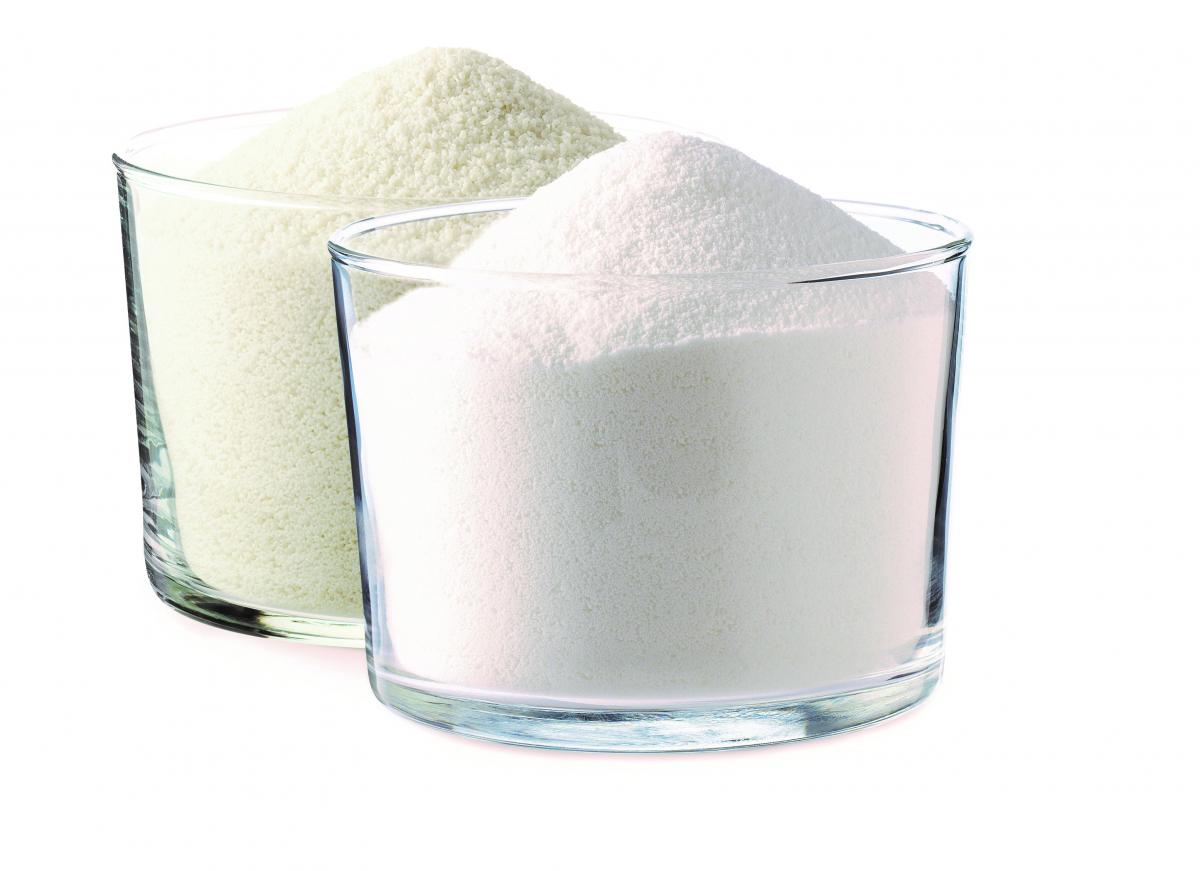THE RECENT report by market research firm MarketsandMarkets* shows that further understanding in the value of protein-enriched diet foods and beverages is fuelling the growth of the dairy ingredients market. This, coupled with more application in nutrition and convenience food sectors, rising demand for bakery products, and dairy production drive the robust expansion in the industry.
In their latest industry survey, Dairy Ingredients Market by Type, Source, Nature, Application, and Region - Global Forecast to 2022, the firm expects that by 2022 global sales in the dairy ingredients market will hit more than US$ 66 billion and will grow at nearly 6% CAGR from 2016. It states that Asia Pacific will lead the global growth during the forecast period, with of course China and India still the fastest growing markets in the region which is experiencing increase in per-capita expenditure and change in food habits.

According to Kerry, cheese is fast becoming a key taste across all end-use markets (Photo: Kerry)
What’s changing?
Buoyed by encouraging developments in the sector, key industry players are positioning themselves to take advantage of emerging trends and opportunities.
“Demand for more indulgence – comfort food that reassures and excites consumers, is a key trend,” says Mervyn Gribben, general manager for Dairy & Nutrition at Kerry Asia Pacific. “Dairy taste is highly relevant here since it’s not only considered indulgent but also healthy.”
Mr Gribben explains that tastes and preferences vary greatly across the Asia Pacific region as dairy is traditionally not part of the Asian diet.
“At Kerry, we understand these regional consumer taste preferences based on the extensive consumer insights work that we have completed,” he continues. “Our in-depth consumer understanding enables us to propose winning signature tastes and concepts for individual countries, consumer groups, and product types.”
With regards to target consumers, Kerry in Asia Pacific considers what they call healthy agers and seniors as key focus demographics.
“Today, people live longer and as such they want to experience quality life. They understand that good nutrition is key in helping them achieve this,” he says.
“We have many innovative ingredients that are highly relevant for the specific nutritional needs of this aging population, including our range of specialized proteins, which can prevent the progression of sarcopenia, as well as Wellmune®, our immunity boosting supplement.”

“We believe that the door has been opened for innovation around unapologetically indulgent dairy offerings and fulfilling dairy snacks”
Mervyn Gribben, General Manager for Dairy & Nutrition, Asia Pacific, Kerry
Meanwhile, dairy ingredients manufacturer Palsgaard observes that there is a growing trend towards lean labelling.
“The definition of food additive apparently doesn’t distinguish between the natural and synthetic/artificial origin of the ingredients,” says Wilson Hui, technical sales manager for Dairy & Ice Cream at Palsgaard Asia-Pacific. “In the eyes of consumers additives are equal to chemical or synthetic components which, for health reasons, should be avoided.”
Mr Hui points out that many additives are of natural origin produced without chemical modifications, and a lot of the functional ingredients holding an E number are natural ingredients such as locust bean gum, guar gum and pectin.
“To fulfil the consumer’s demands for leaner label products, Palsgaard, for example, has developed a new range of emulsifier and stabilizer system for ice cream,” he continues. “Emulsifier and stabilizer blends for ice cream traditionally contain at least three E numbers although four or five E numbers are very common. As each added ingredient in the blend has a specific functionality, removal of any of the ingredients influences the ice cream quality.”
However, Mr Hui reveals that they have succeeded in developing new blends with two or even one E number while still obtaining high scores on important quality parameters such as sensory properties, stand up properties, melt down properties and storage stability.
Product improvements
Kerry has noted that the past two years were challenging years globally for the dairy industry due to an oversupply of milk colliding with economic and geopolitical issues in key markets. But the company is confident in their outlook for 2017 and in the long-term for the dairy market.
“Over the years, we have seen a change in the science around dairy fat. It received bad publicity in the 1990s and 2000s, but the science has changed around this and it has resulted in a huge regrowth for dairy products,” says Mr Gribben. “With our strong dairy heritage, Kerry is perfectly positioned to develop solutions in this rejuvenated dairy space, in applications such as savory yogurts, new textures and experimental flavors.”
He also cites that constant innovation in the sector and demand for health-enhancing foods will continue to drive consumption.
“We believe that the door has been opened for innovation around unapologetically indulgent dairy offerings and fulfilling dairy snacks,” say Mr Gribben.
“The lines between different food & beverage categories are increasingly blurred, with cheese and dairy becoming the snack of choice. This is the reason why cheese is now used in many applications such as cheese yogurts, cheese candies, cheese noodles, cheese ice cream, etc., and is fast becoming a key taste across all end-use markets.”
“Our core business is bringing taste and nutrition together in a way that is unique and uncompromising,” says Mr Gribben. “At Kerry, we understand both and we believe passionately that you do not need to compromise on either great taste or nutrition when developing new foods and beverages for today’s discerning consumer.”
The company markets a wide range of ingredients such as cheese & dairy powders, cheese & dairy flavors, enzyme-modified dairy ingredients & cheese, dairy & culinary seasonings, texture systems & emulsifiers, dairy & cheese sauces, soft serve solutions, milk protein & specialised protein hydrolysates, infant formula ingredients & bases, creamers, nutritional lipids, and Wellmune® - a yeast beta glucan that supports and strengthens the immune system.
“Kerry also offers strong applications expertise, enabling us to create signature recipes based on our knowledge of how different ingredients interact, and their impact on dairy taste,” he continues. “We leverage our extensive consumer insights, to understand local taste and texture preferences and this enables us to advise our customers on optimal concepts for their markets.”

“Adjusting recipes, optimizing process flows and reducing cost are important areas in our application work. The urge to find ever better solutions is deeply ingrained in us”
Wilson Hui. Technical Sales Manager for Dairy & Ice Cream, Palsgaard Asia-Pacific
At Palsgaard, the company innovates emulsifiers, stabilizers and other ingredients for the food industry.
“Most of our emulsifiers have a content of trans fatty acid of less than 1%, but more importantly, they can contribute to producing foods with reduced levels of trans fatty acids – yet with unchanged sensory and shelf life quality in the final food product,” explains Mr Hui.
“For dairy products manufacturers, Palsgaard develops integrated products meaning that the stabilizers are coated by the emulsifier to ensure a homogeneous and easy dispersible products.”
According to the company, the demand for integrated products are driven by (1) reduced waste and risk of weighting error, as only one ingredient is added to dairy product, (2) lesser number of raw materials and suppliers, and 3) easy handling in the production, meaning no dust formation and with 100% uniform composition.
Strict regulatory standards met
In a highly competitive market such as the dairy ingredients sector, quality and safety are paramount at products go through the supply chain.
“We systematically analyze and manage food safely at all stages of the supply chain,” says Mr Hui. “A permanent cross-company group is tasked with ensuring efficient communication routes via our Food Safety Team and working groups. This ensures that changes and new requirement from authorities and customers are continuously aligned and managed.”
He adds that Palsgaard’s quality management system is built on the ISO 9001 platform, a certification they have maintained for many years. In 2011, their system was upgraded and their operations certified according to FSSC 22000, which includes ISO 22000.
On the other hand, Kerry says that its dairy manufacturing sites globally are accredited by the highest of international standards.
“Upon arrival at a manufacturing site, all milk is tested for quality and safety. It is also regularly tested throughout processing and prior to final release,” he explains. “Our regulatory team constantly reviews changes to food legislation and works very closely with our quality and manufacturing colleagues to proactively ensure that our products meet current and impending legislation changes.”
Kerry also works in partnership with research institutes and universities to keep abreast of new scientific discoveries to guarantee the safety and effectiveness of their products.
“Independently and in partnership with academic association and industry bodies, we have published many clinical papers in peer-reviewed clinical journals which demonstrate the benefits our ingredients bring to our customers and their consumers,” says Mr Gribben.

To fulfil demand for leaner label products, Palsgaard has developed a new range of emulsifier and stabilizer systems for ice cream
Helping customers win in the marketplace
“Our pilot plants are essential for building up know how and practical experience within the dairy field,” says Mr Hui. “When important knowledge is achieved we share it with customers in the form of advice, ideas and assistance in product development. At the same time our pilot plants are also essential for creating new, safe and market relevant innovations.”
Palsgaard has application centers in Singapore, China, Mexico and Denmark which enables the company to be in close contact with customers throughout their product development process. “We analyse the various phases and modify the end product so that it meets consumer preferences in the relevant market,” highlights Mr Hui.
At Kerry, Mr Gribben says that their worldwide presence has enabled the company to have a deep understanding of global and local taste preferences, knowledge of people, cultures, life stages and daily nutritional needs.
“By partnering with us, customers are taken on a journey to make foods and beverages that people enjoy and feel better about. We call this Leading to Better.”
Reference
* Dairy Ingredients Market by Type (Milk Powder, Whey Ingredients, MPC & MPI, Lactose & Its Derivatives, Casein & Caseinates, Milk Protein Hydrolysates), Source (Milk and Whey), Nature, Application, and Region - Global Forecast to 2022 - www.marketsandmarkets.com/Market-Reports/dairy-ingredients-market-974.html
ADIDAS













